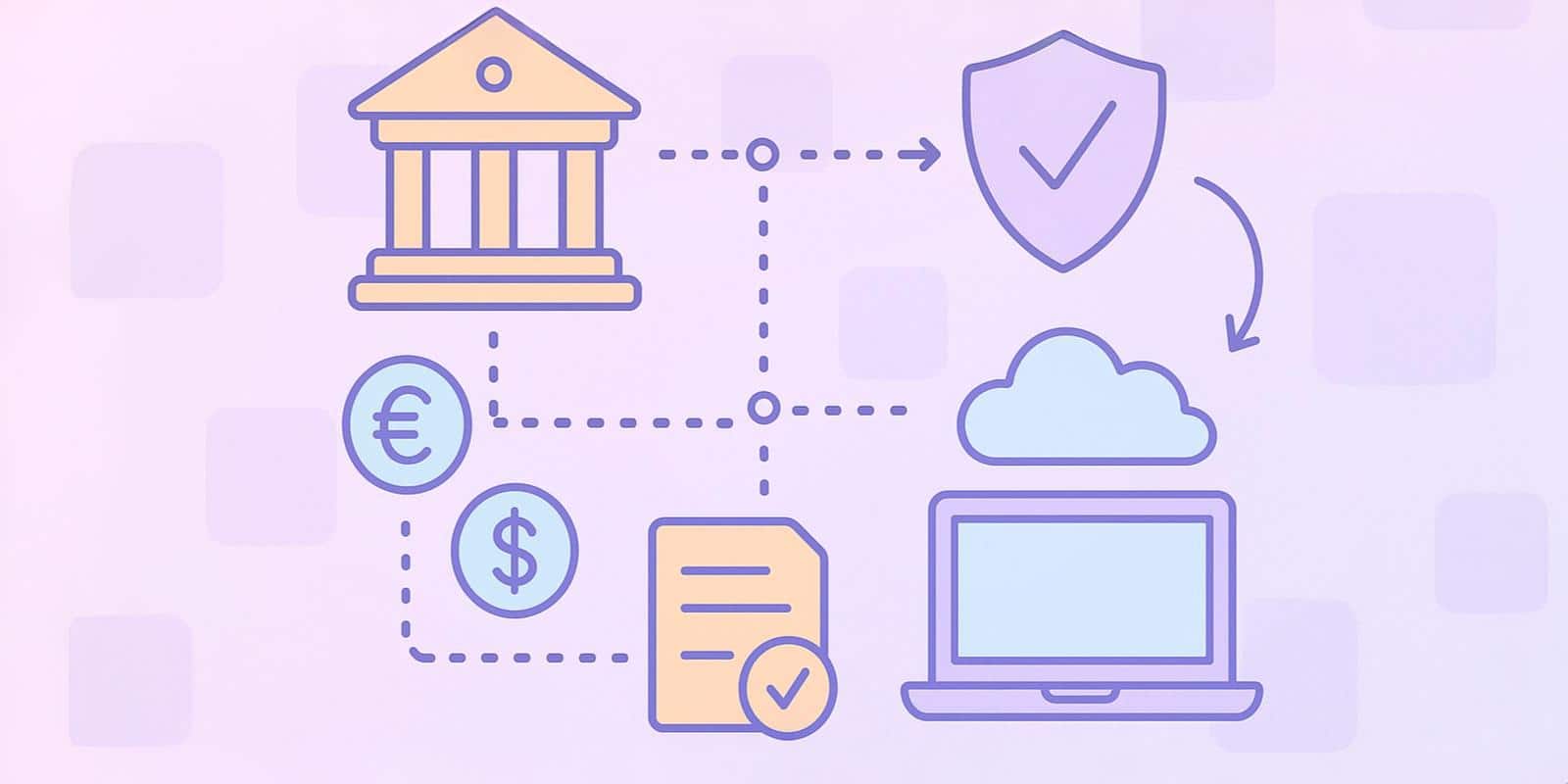Pagamentos SaaS
O que são Pagamentos de Open Banking?

O que são Pagamentos de Open Banking?
Open Banking é um sistema que permite o compartilhamento seguro de dados financeiros entre bancos e provedores terceiros autorizados por meio de Interfaces de Programação de Aplicativos (APIs). O objetivo é se relacionar com a concorrência, inovação e controle do consumidor no domínio dos dados financeiros.
Os Pagamentos do Open Banking se relacionam com este sistema, permitindo que consumidores e empresas façam pagamentos de suas contas bancárias por meio de aplicativos de terceiros.
Como funcionam os Open Banking Payments?
Os Pagamentos do Open Banking funcionam usando APIs seguras para criar uma ligação direta entre o comerciante e o banco do cliente. Essa via padronizada permite que organizações terceirizadas e verificadas, conhecidas como Provedores de Serviço de Iniciação de Pagamento (Payment Initiation Service Providers - PISPs), iniciem pagamentos em nome do cliente.
O processo apresenta uma série de etapas, juntamente com disposições de segurança.
- O consumidor escolhe a opção de pagamento do Open Banking ao finalizar a compra.
- O PISP redireciona o consumidor com segurança para o aplicativo ou site do seu próprio banco.
- O consumidor autoriza o pagamento usando a autenticação padrão e robusta de seu banco (por exemplo, reconhecimento facial, impressão digital ou senha).
- Após o pagamento, os fundos são transferidos da conta do cliente para a conta do comerciante.
Este sistema ignora os gateways de pagamento tradicionais e nenhum detalhe do cartão é inserido ou armazenado pelo comerciante.
Quais são os benefícios do Open Banking Payments?
A implementação de APIs em Open Banking Payments oferece uma abordagem diferente dos métodos tradicionais, podendo impactar sua relevância.
- Segurança: Eliminar a entrada e o armazenamento manual de cartões pode ter um impacto na probabilidade de violações de dados. As transações estão sujeitas a medidas de segurança comparáveis às empregadas pelos bancos.
- Redução de Custos: Os comerciantes podem ter taxas de transação diferentes em comparação com pagamentos com cartão, e alterações nos custos operacionais podem resultar de processos financeiros ajustados.
- Impacto na Velocidade de Pagamento: O aumento da velocidade de liquidação de pagamentos, possivelmente instantânea, pode afetar o fluxo de caixa das empresas e influenciar a disponibilidade de serviços imediatos, como reembolsos instantâneos ou financiamento de contas.
- Ajustes no checkout: Modificações no processo de checkout podem estar correlacionadas ao desempenho dos negócios.
Mudanças na forma como os consumidores interagem com seus dados financeiros dão suporte a serviços como detecção de fraudes e produtos financeiros personalizados.
Pagamentos via Open Banking vs. Pagamentos com Cartão Tradicionais
Não se espera que o Open Banking substitua completamente os pagamentos com cartão, mas sim que exista como uma opção complementar no ecossistema de pagamentos.
|
Recurso |
Pagamentos via Open Banking |
Pagamentos tradicionais com cartão |
|
Fluxo de pagamento |
Transferência bancária direta via API |
Roteado por meio de redes de cartão (por exemplo, Visa) |
|
Entrada de dados |
Não é necessário inserir manualmente os dados do cartão |
Requer a inserção manual do número do cartão, data de validade e CVV |
|
Segurança |
Autenticação em nível bancário; sem armazenamento de dados do cartão |
Sujeito a violações de dados onde os detalhes do cartão são armazenados |
|
Taxas |
Taxas de transação reduzidas |
Envolve várias taxas (intercâmbio, avaliação, etc.) |
|
Liquidação |
Liquidação quase instantânea |
A liquidação pode levar vários dias úteis |
Quais são alguns casos de uso de pagamentos com Open Banking?
O Open Banking está relacionado a uma série de aplicativos e diferentes modelos de pagamento em diversos setores.
- E-commerce: Instantâneo reembolsos de pagamentos e processos de checkout simplificados.
- Serviços Financeiros: A velocidade de aprovação de empréstimos e financiamento de contas de corretagem pode ser aprimorada.
- Aplicativos de Finanças Pessoais: Eles utilizam dados em tempo real para funções como orçamento e gestão financeira.
- Cobrança de dívidas: Facilitando reconciliação de pagamentos.
- Novos Modelos: A interoperabilidade entre plataformas pode influenciar serviços como empréstimos personalizados e serviços de tesouraria customizados, potencialmente afetando a inclusão financeira.
Qual é o futuro do Open Banking Payments?
A evolução do Open Banking implica trabalho em equipe contínuo entre bancos e fintechs. Essa evolução também apresenta considerações sobre segurança cibernética e considerações sobre privacidade de dados exigindo medidas de segurança.
As estruturas regulatórias são cruciais para manter a proteção e a padronização.
Os principais regulamentos incluem:
- PSD2 (Payment Services Directive 2) na Europa.
- The Consumer Data Right (CDR) na Austrália.
- Espera-se que a PSD3 proposta na UE tenha uma influência contínua no cenário de pagamentos.
Conclusão
Os Pagamentos Open Banking apresentam uma alternativa aos cartões tradicionais, com potenciais implicações para segurança, custo e experiência do usuário. Facilitar transferências bancárias diretas com medidas de segurança pode afetar os custos comerciais e pode estar relacionado à experiência de finalização da compra e à satisfação do cliente.